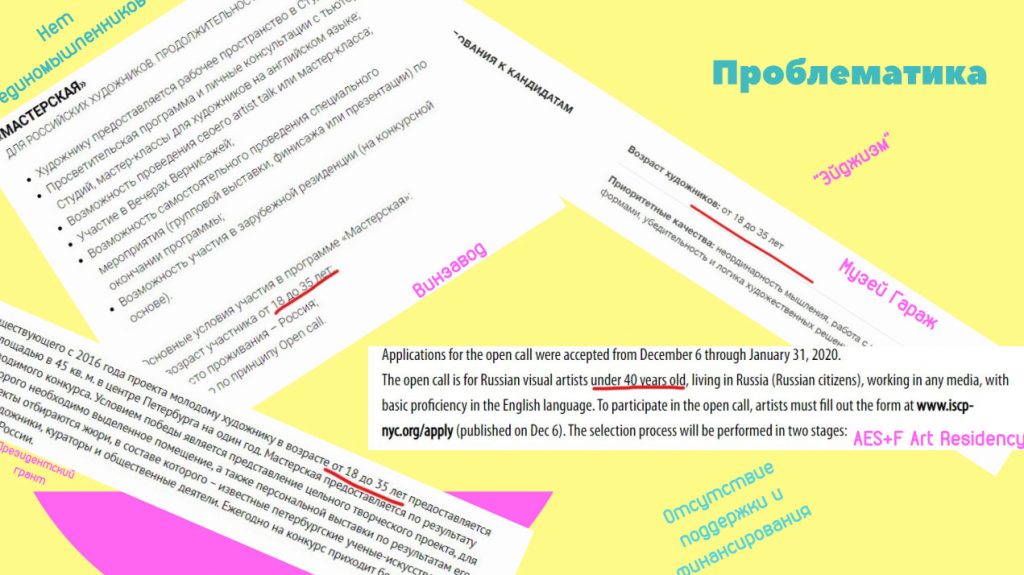Now people talk a lot about discrimination based on skin color, religion, sexual preferences, and so on. Who would think that there is discrimination in art?

In the era of globalization, it has become much easier for artists and artists to communicate with each other, create international projects and promote them. But, unfortunately, since ancient times, the emphasis of most projects has been directed at young artists aged from 20 to 30 years, since there is an opinion that they are more promising, active and interesting for a wide audience. Some believe that this is “ageism”(from the English “age”, ageism) or age discrimination. In the history of art, there are many examples of artists who either started their career or became famous after 30, among them: Henri Matisse, Paul Gauguin, Anna Moses and others.
There are many examples of “ageism”:
So recently, the famous art group AES+F announced a competition for a grant in the field of contemporary art for young Russian artists. The winners were able to live and work for three months at the ISCP (International Studio &Curatorial Program) art residence in New York in 2020. This is the only grant in Russia and the first in the world organized by Russian artists. Artists living in Russia (citizens of the Russian Federation) up to 40 years old, working in any genre, could take part.
Vinzavod in Moscow also has a program of “Open Studios”. The project positions itself as a platform that combines the principles of a workshop, a residence and an art school on the basis of one of the leading Russian art institutions. The project was launched by the VINZAVOD Foundation for the Support of Contemporary Art as part of the New Names strategic direction, it offers a modern space for creativity and work, an up-to-date educational program, an opportunity to integrate into the professional environment. The main conditions of the programs are the age of the participant from 18 to 35 and the selection according to the open-call principle.
The above are just some examples of the leading groups and institutions in Russia and their age restrictions. There are many more competitions abroad, where the criteria for participants are the same.
The above are just some examples of the leading groups and institutions in Russia and their age restrictions. There are many more competitions abroad, where the criteria for participants are the same.
One of the recent winners of the presidential grant competition in St. Petersburg was the Project to support young artists “Creative Space Cricket”. Within the framework of the existing project since 2016, a young artist aged from 18 to 35 years is provided with a workshop of 45 sq. m. in the center of St. Petersburg for one year.
In St. Petersburg, as in any big city, there is a problem of access of artists, especially young ones, to creative workshops. There is a social program in the city, according to which non-residential area is provided to participants of creative unions for workshops at a preferential rental rate (10% of the commercial one). However, even such a cost can be unaffordable for a young author who is just starting his creative path. In addition, < strong>not every young artist has the desire or the opportunity to join a creative association, in which there are also problems with obtaining workshops (queues, protectionism, and so on. Thus, young artists are often deprived of the opportunity to express themselves, present their projects to curators and art critics, and get a space to work. “- the organizers say about the social significance of the project to support young artists “Open collaborative space Sverchok”.
In addition, many modern open-calls/contests: invite artists of all ages, require an entrance fee for artists of 35+ more often higher than for younger colleagues, considering that an artist over 35 cannot be a beginner; invite artists, require an entrance fee, because of which a novice amateur artist simply will not dare to participate in them; most events are held abroad, and a novice amateur artist may be afraid of many unfamiliar procedures related to both registration of documents in a foreign language, and; sending works of art abroad.
I want to change this!
#art #benditch